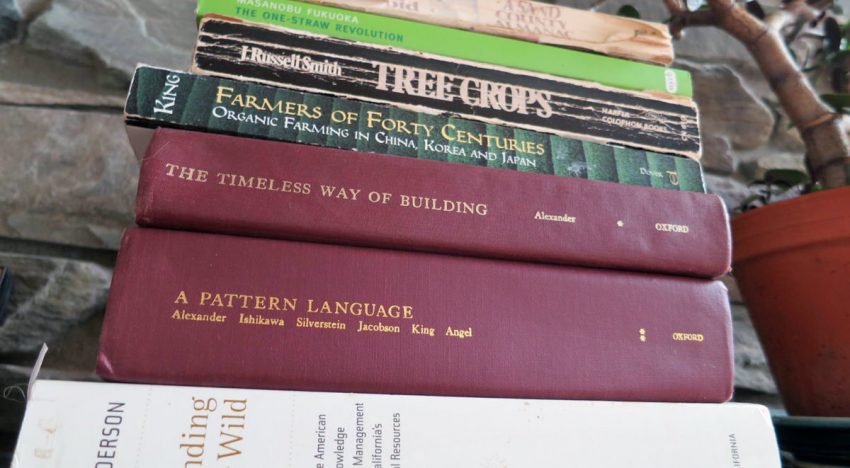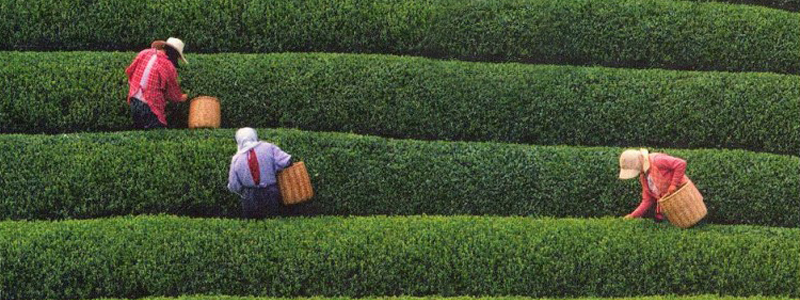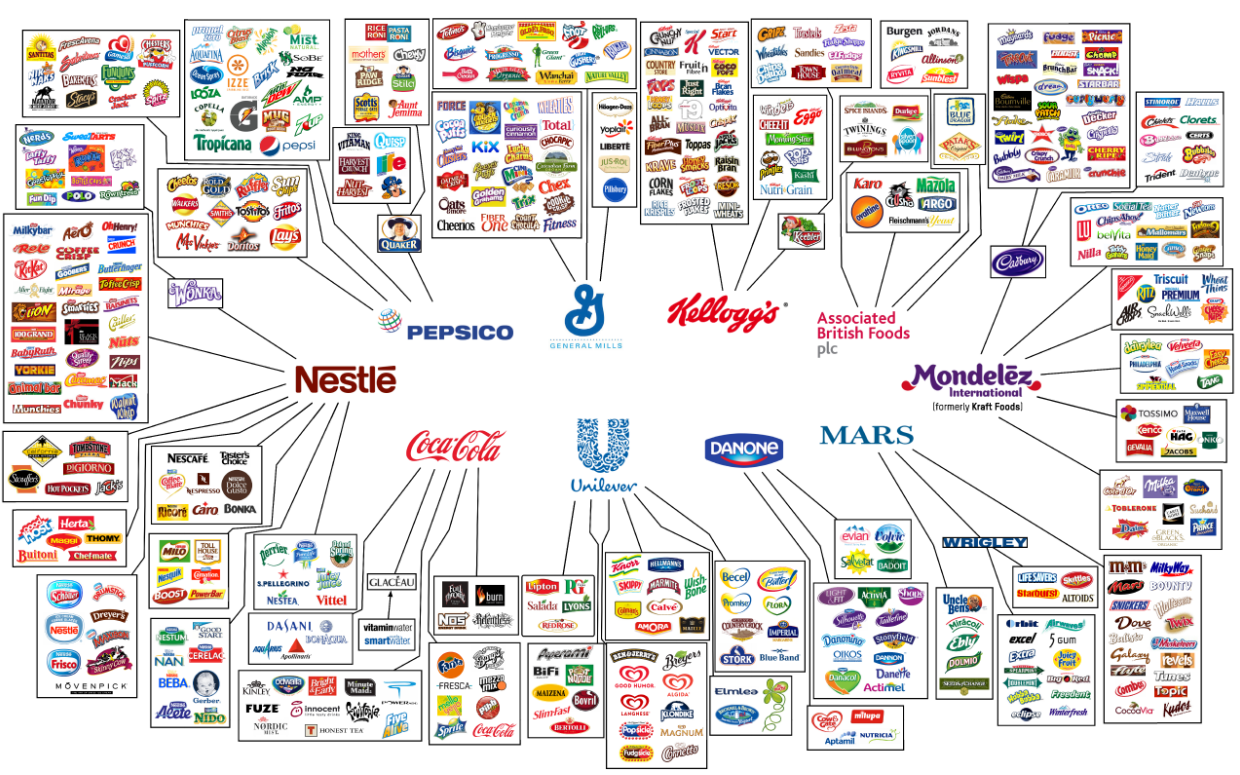The knowledge in these books have the potential to feed the world, regenerate and restore the soil, reforest deserts, and lead the way to permanent food security for mankind.
Bold claims, I know, but I believe them to be true because many of these books are based on what has already happened. Some of the books do include grand visions but the solutions they present are not science fiction, the answers are found in our own history.
The history of mankind shows that a civilization can only be as stable as its food supply. When the food supply falters, be it due to natural disaster or man-made destruction of the top soil, the civilization goes down the drain with it. The result? War, violence, starvation as well as financial, social and cultural collapse, and so on.
What led me to these seven books was a photo and mention on the Facebook page of Ben Falk, founder of Whole Systems Design and author of The Resilient Farm and Homestead (thanks for letting me use the photo!). Ben is a true self-reliance and permaculture pioneer on his resilient homestead in Vermont, and when he said that “there are seven books that NEVER get put away here” because “they are turned to so often”, that got my attention.
Here are shortcuts to the book descriptions below:
1. A Sand County Almanac by Aldo Leopold
2. The One-Straw Revolution by Masanobu Fukuoka
3. Tree Crops – A Permanent Agriculture by J. Russel Smith
4. Farmers of Forty Centuries: Organic Farming in China, Korea and Japan by F.H. King
5. The Timeless Way of Building by Christopher Alexander
6. A Pattern Language by Christopher Alexander
7. Tending the Wild by M. Kat Anderson
Some of the books I’ve read and know from before and they’re all what I consider game changers in my own search for knowledge, and some of the books were new to me.
Without further ado, here are seven books every homesteader and farmer should read. The same goes for every permaculture designer, architect, city planner, politician, president, change maker, activist, and so on who cares about this planet’s future.
1. A Sand County Almanac by Aldo Leopold
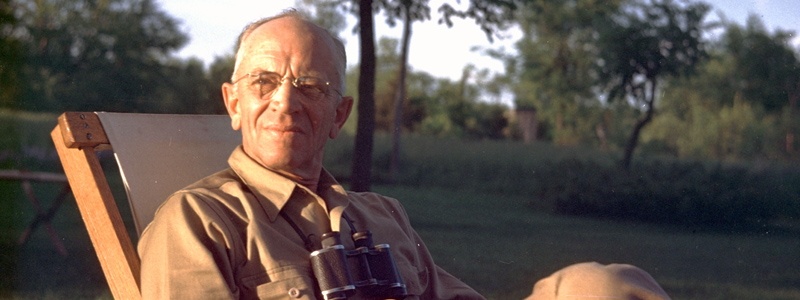
Considered by many as the father of wildlife management and of the United States’ wilderness system, Aldo Leopold was a conservationist, forester, philosopher, educator, writer, and outdoor enthusiast.
“There are some who can live without wild things, and some who cannot. These essays are the delights and dilemmas of one who cannot.” – Aldo Leopold
First published in 1949, A Sand County Almanac combines some of the finest nature writing since Thoreau with an outspoken and highly ethical regard for America’s relationship to the land.
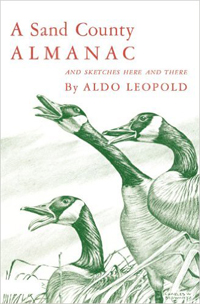 But it would be a mistake to describe this book as “nature writing” per se, or of that genre. As one reviewer writes, “It is a series of essays in wonderful prose in which nature, outdoor settings or situations provide the backdrop. But it is not written as a naturalist droning about the wonders of some aspect of nature. It is an inspired and deeply insightful description, by a man who clearly has a deep understanding of how nature works, about the ethical dimensions of our relationship with the land and our environment generally.”
But it would be a mistake to describe this book as “nature writing” per se, or of that genre. As one reviewer writes, “It is a series of essays in wonderful prose in which nature, outdoor settings or situations provide the backdrop. But it is not written as a naturalist droning about the wonders of some aspect of nature. It is an inspired and deeply insightful description, by a man who clearly has a deep understanding of how nature works, about the ethical dimensions of our relationship with the land and our environment generally.”
Through science, history, humor, and prose, Leopold utilizes A Sand County Almanac and its call for a Land Ethic to communicate the true connection between people and the natural world, with the hope that the readers will begin to treat the land with the love and respect it deserves.
“One of the penalties of an ecological education is that one lives alone in a world of wounds. Much of the damage inflicted on land is quite invisible to the layman. An ecologist must either harden his shell and make believe that the consequences of science are none of his business, or he must be the doctor who sees the marks of death in a community that believes itself well, and does not want to be told otherwise. One sometimes envies the ignorance of those who rhapsodize about a lovely countryside in process of losing its topsoil, or afflicted with some degenerative disease in its water systems, fauna or flora.” – Aldo Leopold
Leopold’s legacy continues to inform and inspire us to see the natural world “as a community to which we belong.”
Check out A Sand County Almanac on Amazon
2. The One-Straw Revolution by Masanobu Fukuoka
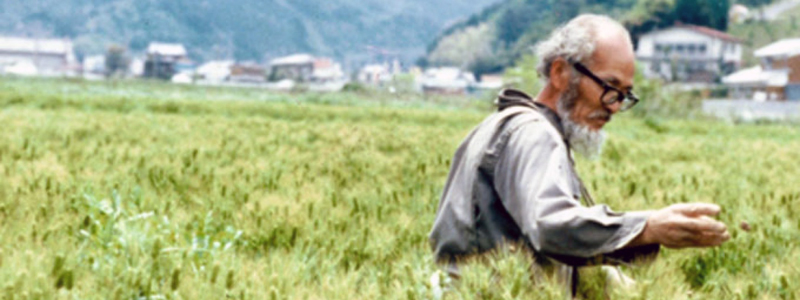
Masanobu Fukuoka, a Japanese farmer and philosopher celebrated for his natural farming and re-vegetation of desertified lands.
“The ultimate goal of farming is not the growing of crops, but the cultivation and perfection of human beings.” – Masanobu Fukuoka
Masanobu Fukuoka’s manifesto about farming, eating, and the limits of human knowledge presents a radical challenge to the global systems we rely on for our food. At the same time, it is a spiritual memoir of a man whose innovative system of cultivating the earth reflects a deep faith in the wholeness and balance of the natural world.
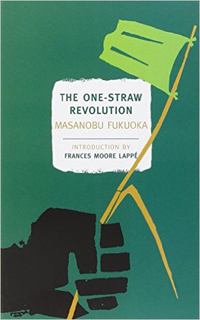 As Wendell Berry writes in his preface, the book “is valuable to us because it is at once practical and philosophical. It is an inspiring, necessary book about agriculture because it is not just about agriculture.”
As Wendell Berry writes in his preface, the book “is valuable to us because it is at once practical and philosophical. It is an inspiring, necessary book about agriculture because it is not just about agriculture.”
In essence, the nugget of his wisdom is that, instead of struggling to control and command nature, we must learn to work with and learn from nature.
Trained as a scientist, Fukuoka rejected both modern agribusiness and centuries of agricultural practice, deciding instead that the best forms of cultivation mirror nature’s own laws. Over the next three decades he perfected his so-called “do-nothing” technique: commonsense, sustainable practices that all but eliminate the use of pesticides, fertilizer, tillage, and perhaps most significantly, wasteful effort.
“I believe that a revolution can begin from this one strand of straw. Seen at a glance, this rice straw may appear light and insignificant. Hardly anyone would believe that it could start a revolution. But I have come to realize the weight and power of this straw. For me, this revolution is very real.” — Masanobu Fukuoka, The One-Straw Revolution
Check out The One-Straw Revolution on Amazon
3. Tree Crops – A Permanent Agriculture by J. Russel Smith
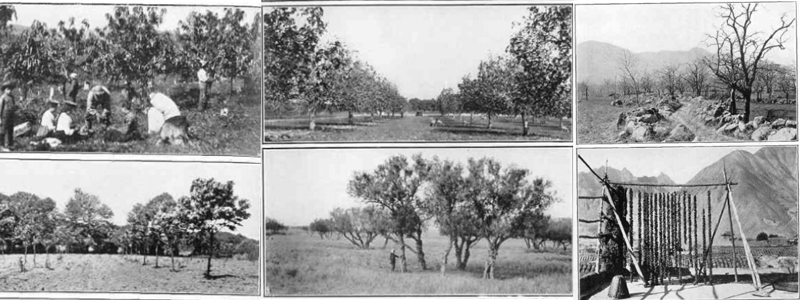
From J. Russell Smith’s book: A few of the many photos from around the globe
“Why are the hills of West China ruined, while the hills of Corsica are, by comparison, an enduring Eden? The answer is plain. Northern China knows only the soil-destroying agriculture of the plowed hillside. Corsica, on the contrary, has adapted agriculture to physical conditions; she practices the soil-saving tree-crops type of agriculture.” – J. Russell Smith
With this question J. Russell Smith sets the tone for his book Tree Crops – A Permanent Agriculture. This book reflects a lifetime of research around the world and personal trials on the author’s farm in Virginia on the uses of perennial tree crops for animal and human food.
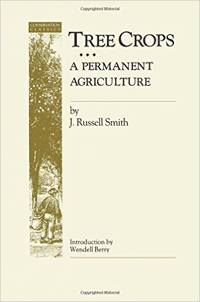 Smith saw trees as “the natural engines of food production” for hill lands that we should put to work; to produce an abundance of food and fodder and to preserve the soil for future generations, permanently.
Smith saw trees as “the natural engines of food production” for hill lands that we should put to work; to produce an abundance of food and fodder and to preserve the soil for future generations, permanently.
During his travels around the world saw many examples of this permanent type of agriculture, for example the chestnut forests of Corsica. He notes in his book: “These grafted chestnut orchards produced an annual crop of food for men, horses, cows, pigs, sheep, and goats, and a by-crop of wood. Thus, for centuries, trees upon this steep slope had supported the families that lived in the Corsican villages. The mountainside was uneroded, intact, and capable of continuing indefinitely its support for the generations of men.”
Here’s David Holmgren, one of the co-originators of the Permaculture design methodology, talking about this 1929 classic:
I’ll leave you with a quote describing his vision, at once practical and lovely:
“I see a million hills green with crop-yielding trees and a million neat farm homes snuggled in the hills. These beautiful tree farms hold the hills from Boston to Austin, from Atlanta to Des Moines. The hills of my vision have farming that fits them and replaces the poor pasture, the gullies, and the abandoned lands that characterize today so large a part of these hills.
These ideal farms have their level and gently sloping land protected by mangum terraces and are intensively cultivated — rich in yields of alfalfa, corn, clover, legumes, wheat, and garden produce. This plow land is the valley bottoms, level hill tops, the gentle slopes, and flattened terraces on the hillsides. The unplowed lands are partly shaded by cropping trees — mulberries, persimmons, honey locust, grafted black walnut, grafted heart nut, grafted hickory, grafted oak, and other harvest-yielding trees. There is better grass beneath these trees than covers the hills today.” – J. Russell Smith
You can download a PDF-version of Tree Crops for free here (1929 edition), read it online, or check it out on Amazon if you prefer a printed version (it’s pricey though).
4. Farmers of Forty Centuries: Organic Farming in China, Korea and Japan by F.H. King
“Between these two books [Farmers of Forty Centuries and Tree Crops], you’ve got solutions to most of what faces humanity, food-wise. Read them. Be inspired.” – Ben Falk, Whole Systems Design
For more than 4,000 years, Asian farmers worked the same fields repeatedly without sapping the land’s fertility and without applying artificial fertilizer.
How did they accomplish this miraculous feat?
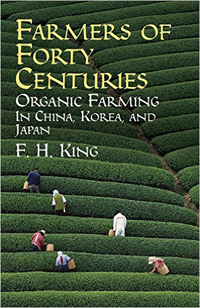 That’s what author Franklin Hiram King describes in his book Farmers of Forty Centuries, first published by his wife in 1911 after his death.
That’s what author Franklin Hiram King describes in his book Farmers of Forty Centuries, first published by his wife in 1911 after his death.
King traveled to China, Korea and Japan in the early 1900s. The purpose of his trip was to study how the extremely dense populations of the Far East could produce massive amounts of food century after century without depleting their soils.
What he discovered was a highly sophisticated system of water management, crop rotation, interplanting and rational utilization of ecological relationships among farm plants, animals and people.
The book has become a classic of the permaculture/sustainable economics movement for several reasons, as noted by a reviewer:
- It dispels the myth that fossil fuel-free agriculture will produce much lower yields than industrial farming. Without access to oil and natural-gas based pesticides, herbicides and fertilizers, agriculture will be much more labor-intensive. However with global population at more than seven billion (as of last October), the world seems to have no shortage of human labor.
- Farmers of Forty Centuries paints a detailed picture of tried and true regional models of food, fuel, and construction materials production, as well as regional water and human waste management.
- It provides detailed descriptions, almost in cookbook fashion, of a broad range of permaculture and terraquaculture techniques.
You can download a PDF-version of the book for free here, as various ebook formats here, read it online here, or get a printed book on Amazon.
5. The Timeless Way of Building by Christopher Alexander
“There is one timeless way of building. It is thousands of years old, and the same today as it has always been. The great traditional buildings of the past, the villages and tents and temples in which man feels at home, have always been made by people who were very close to the center of this way. And as you will see, this way will lead anyone who looks for it to buildings which are themselves as ancient in their form as the trees and hills, and as our faces are.” – Cristopher Alexander
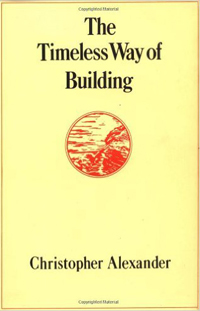 The Timeless Way of Building is the introductory volume in the Center for Environmental Structure series. In it Christopher Alexander presents a new theory of architecture, building, and planning which has at its core that age-old process by which the people of a society have always pulled the order of their world from their own being.
The Timeless Way of Building is the introductory volume in the Center for Environmental Structure series. In it Christopher Alexander presents a new theory of architecture, building, and planning which has at its core that age-old process by which the people of a society have always pulled the order of their world from their own being.
The book explains the idea of patterns in architecture, and how we can use these patterns to build and maintain healthy living environments. As one reviewer notes on the term ‘pattern’, “there are certain patters in buildings. When the pattern works the building is pleasing. Otherwise it isn’t. These patterns are not architectural design plans, they are instead organic, instinctive, feeling-based relationships.”
[..] despite reading and re-reading the first half of the Timeless Way of Building about 10-15 times since first doing so in college, I am still enthralled at the depth of what Alexander is conveying in this work. Anyone who finds themselves amidst the planning stages of your houses or landscapes: I cannot encourage you enough to spend some real time with his work.” – Ben Falk, Whole Systems Design
Check out The Timeless Way of Building on Amazon (or your local library, the book is quite expensive).
6. A Pattern Language by Christopher Alexander
“If you are interested in making great spaces – especially homes – and can only spend time with one book, this would be our pick. Read it and read it again. The kind of book you’ll never be “done” with.” – Ben Falk, Whole Systems Design
Also by Cristopher Alexander, A Pattern Language is the second book in the Center for Environmental Structure series and takes a more practical approach compared to The Timeless Way of Building. The book presents a series of “patterns” that the authors believe must be present in order for an environment to be pleasing, comfortable, or in their words, “alive.”
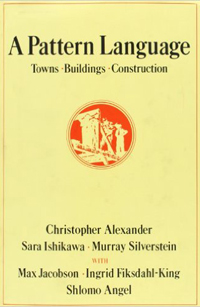 The “patterns” are answers to design problems, such as:
The “patterns” are answers to design problems, such as:
- How high should a window sill be?
- How many stories should a building have?
- How should the light fall within a home?
- Where should the windows be placed?
- How much space in a neighborhood should be devoted to grass and trees?
More than 250 of the patterns in this pattern language are given in the book: each consists of a problem statement, a discussion of the problem with an illustration, and a solution.
As the authors say in their introduction, many of the patterns are archetypal, so deeply rooted in the nature of things that it seemly likely that they will be a part of human nature, and human action, as much in five hundred years as they are today.
Check out the book on Amazon (or your local library, the book is quite expensive).
7. Tending the Wild by M. Kat Anderson

Cahuilla woman storing acorns for food
“Nature really misses us,” laments M. Kat Anderson. “We no longer have a relationship with plants and animals, and that’s the reason why they’re going away.”
This book works not only as a history of indigenous horticulture in California, but also as a beginners manual for those who seek to understand more about sustainable, indigenous land management, gleaned in part from interviews and correspondence with Native Americans who recall what their grandparents told them about how and when areas were burned, which plants were eaten and which were used for basketry, and how plants were tended.
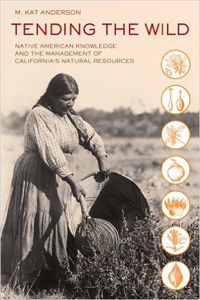 The bulk of Tending the Wild describes how the California Indians tended the land. They did not merely wander across the countryside in hopes of randomly discovering plant and animal foods. They had an intimate, sacred relationship with the land, and they tended it in order to encourage the health of their closest relatives — the plant and animal communities upon which they depended.
The bulk of Tending the Wild describes how the California Indians tended the land. They did not merely wander across the countryside in hopes of randomly discovering plant and animal foods. They had an intimate, sacred relationship with the land, and they tended it in order to encourage the health of their closest relatives — the plant and animal communities upon which they depended.
Tending the Wild is an important book, because it presents us with stories of a way of life that worked, and worked remarkably well, for countless generations. This is precious knowledge for us to contemplate, as our own society is rapidly circling the drain, and our need for remembering healthy old ideas has never been greater.
“Through coppicing, pruning, harrowing, sowing, weeding, burning, digging, thinning, and selective harvesting, they [California natives] encouraged desired characteristics of individual plants, increased populations of useful plants, and altered the structures and compositions of plant communities. Regular burning of many types of vegetation across the state created better habitat for game, eliminated brush, minimized potential for catastrophic fires, and encouraged diversity of food crops. These harvest and management practices, on the whole, allowed for sustainable harvest of plants over centuries and possibly thousands of years.“
In this book we come to see California’s indigenous people as active agents of environmental change and stewardship. Tending the Wild persuasively argues that this traditional ecological knowledge is essential if we are to successfully meet the challenge of living sustainably.
“The map in there of California cultural regions before colonization is insanely amazing.” – Ben Falk, Whole Systems Design
Check out Tending the Wild on Amazon
What All These Books Have In Common
The one big takeaway from all of these books, in my mind, is that they irrefutably show us that there are alternative futures possible for humanity. There are ways we can feed ourselves, clothe ourselves and build our homes without depleting the soil and destroying nature.
But if the knowledge in these books can “fix” the world, why did not previous generations get it done? After all, some of these books are over 100 years old.
The answer is simple. As Wendell Berry writes in the foreword to a newer edition of Tree Crops:
“The minds that have dominated agriculture since 1929 when Tree Crops was first published, have been little interested in conserving either the land or the people on the land. They have, Heaven knows, seen no visions of “a million neat farm homes snuggled in the hills.” A farming system in which millions of small landowners would manage devotedly and skillfully a diversified, locally-adapted system of tree crops, pastures, animals, and row crops has been simply unthinkable to them.”
Or as permaculture co-originator Bill Mollison says in Permaculture: A Designers’ Manual:
“We know how to solve every food, clean energy, and sensible shelter problem in every climate; we have already invented and tested every necessary technique and technical device, and have access to all the biological material that we could ever use.
The tragic reality is that very few sustainable systems are designed or applied by those who hold power, and the reason for this is obvious and simple: to let people arrange their own food, energy, and shelter is to lose economic and political control over them. We should cease to look to power structures, hierarchical systems, or governments to help us, and devise ways to help ourselves.“
Now, back to my bold claim. Can a book really save the world?
No. Only human action (and in some cases human inaction) can save the world.
A book can show us the door to another reality, but we’ll have to walk through the door of our own accord.
It’s up to us, the humans who desire this alternative future, to change how things are done and show people that there is indeed a better way.
Nestle won’t get it done. Unilever won’t get it done. Monsanto won’t get it done. Nor any other of the mega corporations below that control almost everything you buy:
So let’s read these books and then get to work making things happen, and start helping ourselves and future generations to a better future. Start in your backyard, create abundance, and I bet you that the rest of your neighborhood will soon follow.
Let these lines from Bob Dylan lead the way:
Come mothers and fathers
Throughout the land
And don’t criticize
What you can’t understand
Your sons and your daughters
Are beyond your command
Your old road is rapidly agin’
Please get out of the new one if you can’t lend your hand
For the times they are a-changin’
Featured photo by Ben Falk of Whole Systems Design

